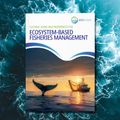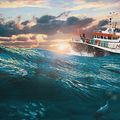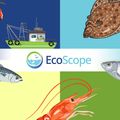EcoScope mark-recapture experiment off the Baleares reveals surprising data on shark species
Researchers of the EU-funded EcoScope project based at the Oceanographic Centre of the Baleares (IEO-CSIC), the Oceanographic Centre of Santander (IEO-CSIC) and the University of the Balearic Islands at Palma, tagged 3,738 fish belonging to 23 different shark and batoid species caught in surveys over more than two years starting in June 2021.
Their study, titled “Elasmobranch Mark–Recapture Experiment off the Balearic Islands: Insight into Scyliorhinus canicula Growth, Mobility, and Population Size” and published in the scientific journal Fishes in August 2024, found “striking differences in population size estimations”, suggesting that MEDITS population density estimates for the shark species S. canicula are likely overestimated, presumably due to its scavenger behaviour leading to them being overcounted near fisheries where discarded fish attract them.
“This study emphasizes the importance of monitoring, collaborative efforts, and improved reporting mechanisms to enhance our understanding of elasmobranch populations and provide support for sustainable management of these vulnerable marine species,” the team commented. “Despite the high diversity of elasmobranch fishes in the Balearic Islands, knowledge of their biology and population dynamics is still scarce,” the researchers said.
Nonetheless, they noted the existence of potential challenges in collaborative efforts with fishermen on recapture reports, citing higher recapture efficiency seen in scientific surveys than in commercial catches.
The research was co-authored by Francesca Ferragut-Perello, Paula Sánchez-Zulueta, Sergio Ramírez-Amaro, Maria Teresa Farriols, Noemi Pasini, Beatriz Guijarro, Cristina Rodríguez-Cabello and Francesc Ordines.
Based on retrievals of the tagged fish, they discovered that the sharks studied have relatively small home ranges, covering 0.2-38.5 km for S. canicula and 7.8-15.3 km for Mustelus mustelus. Similar behaviour was observed for S. canicula in another mark-and-recapture experiment in the Cantabrian Sea, where the distance from tagging point to recapture point averaged 30 km, though some of the sharks there were recaptured at more than 200 km from where they were tagged, indicating that sharks of this species are capable of significantly larger home ranges than those observed off the Baleares, the researchers said.
The relative isolation seen among such sharks living off the Baleares could be favoured by the more significant depths of the sea floor surrounding the archipelago, greater than 600m, and often much deeper, whereas the preferred bathymetric range of S. canicula observed around the Balearic Islands was only 45-420m.
“Scyliorhinus canicula is an important component of the structure of the Balearic Islands ecosystem,” the researchers stressed, noting that the Mediterranean is considered to be a “key hotspot of extinction risk” for sharks and related species, with fully 60% of the sea’s 72 elasmobranch species are considered to be threatened, and many of them endangered or critically endangered. Knowledge of the S. canicula population size is therefore “essential for understanding its ecological role in this ecosystem and to improve the knowledge of its population dynamics and web structure in the archipelago. The results provided here, along with expectable future recaptures, may contribute to improving estimations of the population of S. canicula off the Balearic Islands, as well as other valuable information, such as the species’ growth and spatial distribution,” they added.
While some of the sharks tagged were recaptured, only those belonging to two out of the seven species tagged were recaptured, the two species discussed above, and none of the batoid fish tagged were, the scientists noted. They explained that mark-and-recapture experiments generally face challenges due to factors that are difficult to control, leading to low recapture rates, even nihil. These factors include mortality caused by tagging, tag loss and difficulty in detecting tags in recaptured individuals, as well as reporting rates.
.jpg)
Figure 1. Map of the Balearic Islands with circles representing the tagging locations with different colours depending on if the tagged species there were batoids and sharks (red), only batoids (green), or only sharks (yellow). The areas of the three surveys where tagging was carried out are shown in striped pattern (CANAL surveys), green (MEDITS surveys in Eivissa and Formentera), and blue (MEDITS surveys in Mallorca and Menorca). Also, the harbours that were informed about the mark-recapture experiment are displayed with blue (contacted in person) and green squares (contacted by e-mail or through the Balearic Islands Fishermen Association).





